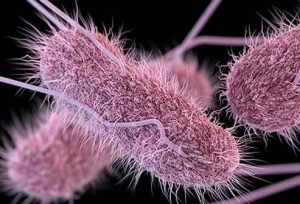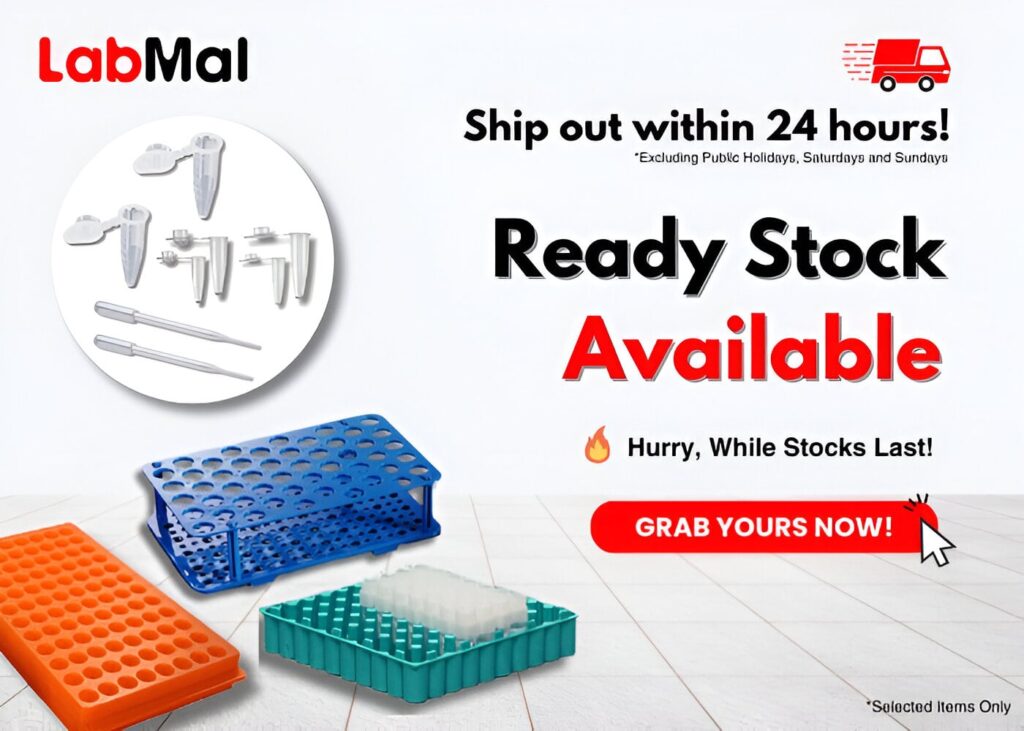
How to detect Salmonella in food, water and clinical samples?
How to Detect Salmonella in Food, Water and Clinical Samples?
What is Salmonella?
Salmonella is a bacteria that causes Salmonellosis, also known as Salmonella infection. This bacterial infection is often accompanied by diarrhea, fever and stomach pains. In some serious cases, it may be life-threatening and require antibiotic therapy.
Eating contaminated food (for example, raw or undercooked meat, poultry, eggs, etc.) and water are the common causes of Salmonellosis. To prevent consumers infected by Salmonella, the food and beverage industry has to ensure the products produced are free from Salmonella bacteria. As a consequence, the detection of Salmonella is important for food safety.
Besides the food and beverage industry, Salmonella detection is important in the clinical industry for diagnosis purposes. In some rare cases, Salmonella infection may spread from the intestines to the other parts of the body via the bloodstream. Early detection and treatment with antibiotics can help to prevent death from Salmonella infection.
In this blog, we’ll talk about how to detect Salmonella in food, water and clinical samples.
Salmonella Detection from Food, Water and Clinical Samples
In the food and beverage industry, ready-to-eat/drink products are the ones often tested for Salmonella, as the presence of Salmonella in any of these is not acceptable. While for clinical materials, stools or faeces are the most commonly used clinical samples to test for the presence of Salmonella.
In general, you can detect the presence of Salmonella using the traditional method or rapid method.
Traditional Detection Method/Two-Steps Enrichment
The traditional detection method takes a longer time compared to the rapid detection method. It typically takes 3-5 days from enrichment to confirmation. In accordance with ISO 6579:2002, it requires primary/non-selective enrichment medium, secondary/selective enrichment medium, plating agars and detection kits for Salmonella.
Day 0 – Primary Enrichment of Salmonella
First, incubate your food, water, or clinical samples in a pre-enrichment/non-selective media (eg: Buffered Peptone Water (ISO)) for 18 hours at 37°C.
Note: Incubation in the pre-enrichment/non-selective media is to resuscitate the low level of injured Salmonella and to allow them to proliferate to a detectable level (Budu-Amoako et al., 1992).
Day 1 – Secondary Enrichment
After incubation in the pre-enrichment/non-selective media, transfer 1 ml of the media to 10 ml of Muller-Kauffmann Tetrathionate-Novobiocin Broth (MKTTn) and 0.1 ml into 10 ml of Rappaport-Vassiliadis Soya Peptone Broth (RVS Broth). Then, incubate MKTTn broth and RVS broth at 37ºC and 41.5ºC respectively for 24 hours.
Note: Both MKTTn and RVS are the secondary enrichment media, which is selectively for Salmonella. This selective medium help to inhibit the growth of non-Salmonella and facilitate the isolation of Salmonella on differential plating media.
Day 2 – Plating
Next, subculture the incubated MKTTn and RVS broths onto XLD Agar and second medium agar of choice (eg. Brilliance Salmonella Agar). Incubate XLD agar at 37ºC for 24 hours while incubating the second medium agar of choice based on the recommendation from the supplier.
Note: The following Oxoid products may be useful to confirm a presumptive Salmonella identification: Nutrient Agar (CM0003), TSI Agar (CM0277), Urea Agar (CM0053 & SR0020K), Lysine Decarboxylase Medium (CM0308), Methyl-Red Voges-Proskauer (MRVP) Medium (CM0043), Tryptone Soya Broth (CM0129), Bismuth Sulphite Agar, Brilliant Green Agar or Hektoen Enteric Agar.
*You may contact us if you need any prepared media for the above agar media.
Day 3-5 – Confirmation
In the end, you might see the red colonies with black centres on XLD agar and purple colonies on Brilliance Salmonella Agar. You need to further test the colonies with biochemical or serological methods to confirm if they are Salmonella bacteria. We’ll discuss the different ways to identify Salmonella later.
Rapid Detection Method/Single-Step Enrichment
The rapid method shortens the number of days, from enrichment to confirmation to as short as 2 days. The method described here is compliant with Oxoid™ Salmonella Precis Method. Furthermore, this method has been certified EN ISO 16140-2:2016 by AFNOR Certification and AOAC Research Institute (AOAC-RI) as part of the Oxoid™ Salmonella Precis™ Method for the detection of Salmonella species. Aside from shorter detection days, it only requires a single enrichment medium. Hence, you can save your valuable time and the cost of media.
*For more details about Oxoid™ Salmonella Precis™ Method, please download here.
Day 0 – Single Enrichment Medium
First, incubate your sample in ONE Broth-Salmonella for 18 hours at 42ºC.
Note: ONE Broth-Salmonella is a highly nutritious and selective medium that allows sufficient Salmonella recovery within 16-20 hours. On top of this, it is a single enrichment medium step and no need for a secondary enrichment broth.
Day 1 – Plating
Next, subculture the incubated One Broth-Salmonella to Oxoid Brilliance Salmonella Agar and incubate for 20 hours at 37ºC.
Note: Oxoid Brilliance Salmonella Agar is a highly selective and easy-to-read agar for the presumptive identification of Salmonella from your sample. Inhibigen technology from Oxoid can help to inhibit and suppress the growth of non-Salmonella bacteria.
Day 2 – Confirmation
Purple colonies on Oxoid Brilliance Salmonella Agar may be the Salmonella spp. They should be tested by appropriate biochemical or other testing methods as well.
Salmonella Detection Method
There are several detection methods that can be used to detect Salmonella colonies on your agar.
Thermo Scientific™ RapID™ ONE System
The RapID™ ONE System is a quantitative method which can rapidly identify more than 70 Enterobacteriaceae, including Salmonella species. Here are some of the features of the RapID™ System:
- One-Step Inoculation – decreased preparation time and increased productivity
- Manual microbial identification made easy – No Oil, No Pipetting, No 24 Hr Incubation
- Four (4) hour incubation – quicker time-to-result for a faster response
- Visible reaction – Reduce subjectivity and decrease testing
Oxoid Salmonella Test Kit
Oxoid Salmonella Test Kit is a rapid latex agglutination test for the presumptive identification of Salmonella spp. This test has been validated to ISO 16140:2003 as the confirmatory step in the Oxoid Salmonella Precis method.
Microbact™ Microbial Identification Kit
Microbact™ Microbial Identification Kit is used to identify Enterobacteriaceae and other Gram-negative bacilli in microplate format. It is a standardised micro-substrate system designed to simulate conventional biochemical substrates used for the identification of Enterobacteriaceae and common Miscellaneous Gram-negative Bacilli (MGNB). Besides, organism identification is based on pH change and substrate utilisations as established by published reference methodologies.
Remel Salmonella Agglutination Sera
A comprehensive range of agglutinating sera for Salmonella O and H antigen serogrouping. You can prepare Salmonella Polyvalent Agglutinating Sera for use in slide agglutination screening procedures to serologically identify cultures for epidemiological and diagnostic purposes. Monovalent Salmonella Agglutinating Sera are intended for the serological identification of Salmonella cultures for epidemiological and diagnostic purposes.
Molecular Detection
SureTect™ Salmonella species PCR Assay is validated on Applied Biosystems™ QuantStudio™ 5 Food Safety Real-Time PCR System. It allows you to test the presence of Salmonella easily and confidently. Additionally, the SureTect™ Salmonella Species PCR Assay has been extensively tested on over 20 different matrices from food manufacturing environments including meat, dairy products, fish, fruit and vegetables, and production surfaces.
Conclusion
In conclusion, we provide agar media and detection kits that are suitable for Salmonella enrichment and detection of your food, water or clinical samples.
Reference:
E. Budu-Amoako, S. Toora, R.F. Ablett, S. Smith
Evaluation of the ability of primary selective enrichment to resuscitate heat-injured and freeze-injured Listeria monocytogenes cells
Appl. Environ. Microbiol., 58 (9) (1992), pp. 3177-3179
Fagerberg, D. I., and J. S. Avens. 1976. Enrichment and plating methodology for Salmonella detection in food. A review. J. Milk Food Techno!. 39:628-646.
ISO 6579:2002, Microbiology of food and animal feeding stuffs — Horizontal method for the detection of Salmonella spp


